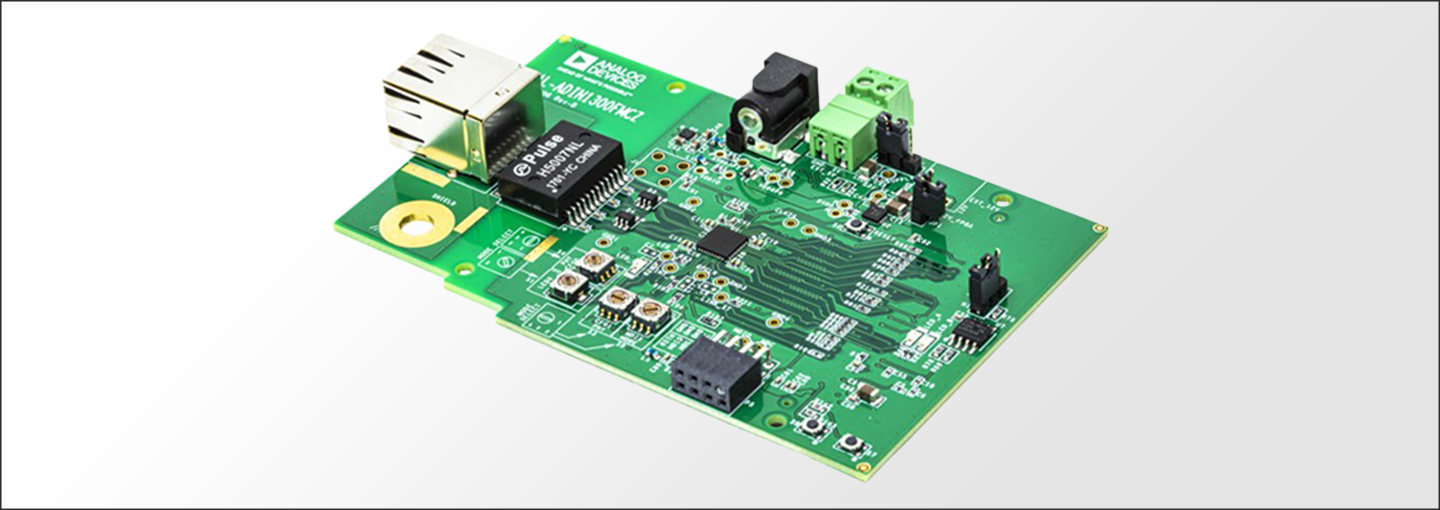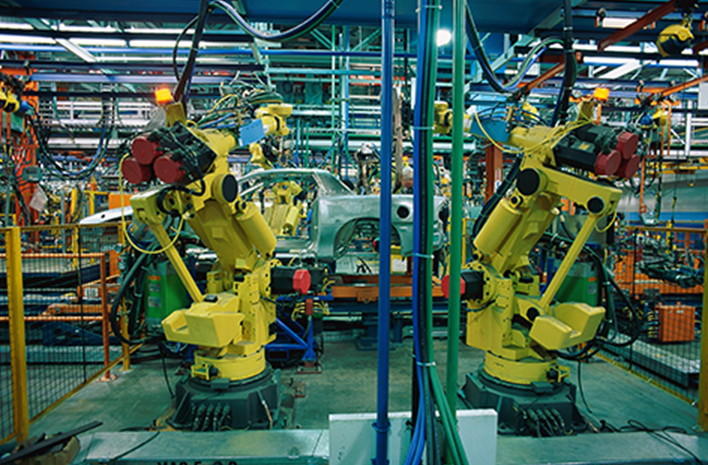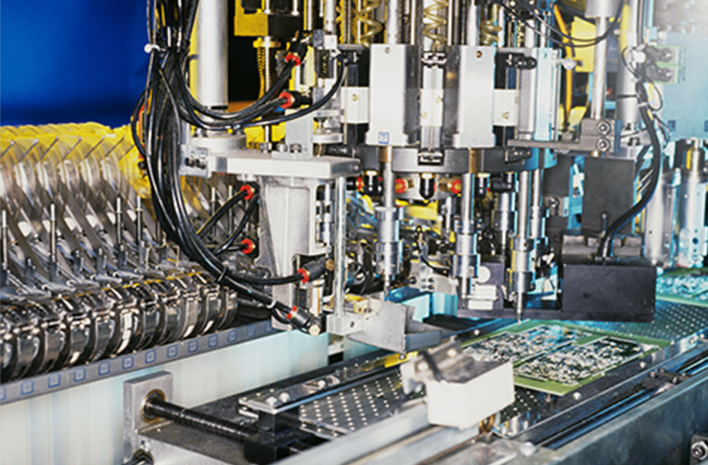What are the characteristics required for the physical layer (PHY) of industrial Ethernet?
Since its appearance in the 1970s, Ethernet has evolved significantly and is now widely used, mainly in office networks. In Industry 4.0, which has accelerated in recent years, industrial Ethernet is the technology that supports the communication of ever-increasing amounts of information.
Industrial Ethernet requires higher robustness than standard Ethernet used in offices, etc., in order to accurately and reliably transmit and receive specific data even in harsh industrial environments such as high temperature, vibration, noise, and noise.
Industrial Ethernet PHYs ADIN1200 and ADIN1300 from Analog Devices have the following three features to achieve more accurate and reliable industrial Ethernet communication.
・Excellent delay performance that leads the industry
・Operating temperature range and EMC characteristics for industrial use
・Suitable for highly airtight environments Low power consumption
Industry-leading latency performance
ADIN1200/ADIN1300は、業界をリードする低い遅延性能を備えています。
これにより、ネットワークサイクルタイムを短縮、ネットワークリフレッシュ時間を改善しより多くのデバイスのネットワーク接続を可能にすることで工業用イーサネットに必要な要件となる、動作制御と安全の確保性を高めます。
ADIN1200/ADIN1300それぞれの遅延性能は以下の通り規定されており、他メーカーと比較して約20%以上遅延が低減されています。
ADIN1200
|
transmission method |
Min |
Typ |
Max |
|
|
100BASE-TX MII |
TX Latency |
52ns |
||
|
RX Latency |
248ns |
|||
|
Total Latency |
300ns |
|||
|
100BASE-TX RGMII(1) |
TX Latency |
84ns |
88ns |
92ns |
|
RX Latency |
250ns |
|||
|
Total Latency |
334ns |
338ns |
342ns |
|
|
100BASE-TX RGMII(2) |
TX Latency |
84ns |
104ns |
124ns |
|
RX Latency |
250ns |
|||
|
Total Latency |
334ns |
354ns |
374ns |
|
|
100BASE-TX RMII |
TX Latency |
72ns |
92ns |
|
|
RX Latency |
328ns |
348ns |
368ns |
|
|
Total Latency |
400ns |
430ns |
460ns |
(1): When Tx FIFO is programmed for synchronous operation
(2): When the MAC transmit clock does not need to be synchronized with the ADIN1200 reference clock and Tx FIFO
Low delay performance of ADIN1200 (Source: Excerpt from ADIN1200 datasheet)
ADIN1300
|
transmission method |
Min |
Typ |
Max |
|
|
1000BASE-T RGMII |
TX Latency |
60ns |
64ns |
68ns |
|
RX Latency |
226ns |
|||
|
Total Latency |
286ns |
290ns |
294ns |
|
|
100BASE-TX MII |
TX Latency |
52ns |
||
|
RX Latency |
248ns |
|||
|
Total Latency |
300ns |
|||
|
100BASE-TX RGMII(1) |
TX Latency |
84ns |
88ns |
92ns |
|
RX Latency |
250ns |
|||
|
Total Latency |
334ns |
338ns |
342ns |
|
|
100BASE-TX RGMII(2) |
TX Latency |
84ns |
104ns |
124ns |
|
RX Latency |
250ns |
|||
|
Total Latency |
334ns |
354ns |
374ns |
|
|
100BASE-TX RMII |
TX Latency |
72ns |
92ns |
|
|
RX Latency |
328ns |
348ns |
368ns |
|
|
Total Latency |
400ns |
430ns |
460ns |
(1): When Tx FIFO is programmed for synchronous operation
(2): When the MAC transmit clock does not need to be synchronized with the ADIN1300 reference clock and Tx FIFO
Low delay performance of ADIN1300 (Source: Excerpt from ADIN1300 datasheet)
Operating temperature range and EMC characteristics for industrial applications
The ADIN1200/ADIN1300 are guaranteed over a wide temperature range.
It also complies with various EMI/EMC/ESD standards, ensuring robust performance even in harsh environments such as factories.
|
ADIN1200 |
ADIN1300 |
|
|
communication speed |
10BASE-T 100BASE-TX IEEE® 802.3™ |
10BASE-Te 100BASE-TX 1000BASE-T IEEE® 802.3™ |
|
MAC Interface |
MII/RMII/RGMII |
MII/RMII/RGMII |
|
package |
32-lead LFCSP |
40-lead LFCSP |
|
Operating temperature range |
–40°C to +105°C |
–40°C to +105°C |
|
EMC test compliance standard |
IEC 61000-4-5 surge (±3kV) IEC 61000-4-4 Electrical Fast Transient (EFT) (±4kV) IEC 61000-4-2 ESD (±6kV contact discharge) IEC 61000-4-6 Conducted Immunity (10V) EN55032 Radiated Emissions (Class A) EN55032 Conducted Emissions (Class A) |
IEC 61000-4-5 surge (±3kV) IEC 61000-4-4 Electrical Fast Transient (EFT) (±4kV) IEC 61000-4-2 ESD (±6kV contact discharge) IEC 61000-4-6 Conducted Immunity (10V) EN55032 Radiated Emissions (Class A) EN55032 Conducted Emissions (Class A) |
ADIN1200/ADIN1300 Operating Temperature Range, Packages, and Compliant Standards List
Low power consumption suitable for airtight environments
Many industrial applications are hermetically sealed to protect internal devices from dirt, dust, moisture, and water.
Therefore, since there is no airflow to dissipate heat from the device, it is necessary to consider power consumption in the design.
Especially in industrial applications where the ambient temperature is high, besides a wide operating temperature range, low power consumption is an important factor.
The power consumption of the ADIN1200/ADIN1300 is specified as follows, and power consumption is reduced by approximately 30% or more compared to other companies' products.
|
Transmission method (RGMII) |
Power consumption (typ) |
I/O supply voltage |
|
|
ADIN1200 |
100BASE-TX |
175mW |
3.3V |
|
155mW |
2.5V |
||
|
139mW |
1.8V |
||
|
ADIN1300 |
1000BASE-T |
425mW |
3.3V |
|
370mW |
2.5V |
||
|
332mW |
1.8V |
||
|
100BASE-TX |
159mW |
3.3V |
|
|
148mW |
2.5V |
||
|
140mW |
1.8V |
Low power consumption of ADIN1200/1300 (Source: Excerpt from ADIN1200/ADIN1300 datasheet)
Evaluation board for easy evaluation of key features of the ADIN1200/ADIN1300
The ADIN1200/ADIN1300 are available with a single 5 V supply evaluation board for easy evaluation of key features.
The evaluation board provides an FMC for connection to a master FPGA system for MAC interface and MDIO control.
An optional MDIO interface dongle with the included ADuCM3029 can also be used to control MDIO.
The features of the ADuCM3029, which are ultra-low power and ideal for IoT applications, can be found in the article below.

The main features of the ADIN1200/ADIN1300 are:
・10BASE-Te/100BASE-TX IEEE® 802.3™ compliant MII, RMII and RGMII MAC interface (ADIN1200)
・10BASE-Te/100BASE-TX/1000BASE-T IEEE® 802.3™ compliant MII, RMII and RGMII MAC interface (ADIN1300)
100BASE-TX RGMII delay: TX < 124ns, RX < 250ns (ADIN1200)
100BASE-TX MII delay: TX < 52ns, RX < 248ns (ADIN1200)
1000BASE-T RGMII delay: TX < 68ns, RX < 226ns (ADIN1300)
100BASE-TX MII delay: TX < 52ns, RX < 248ns (ADIN1300)
・EMC test standards:
IEC 61000-4-5 surge (±3kV)
IEC 61000-4-4 Electrical Fast Transient (EFT) (±4kV)
IEC 61000-4-2 ESD (±6kV contact discharge)
IEC 61000-4-6 Conducted Immunity (10V)
EN55022 Radiated Emissions (Class A)
EN55022 Conducted Emissions (Class B)
- Unmanaged configuration using multi-level pin straps
・Energy Efficient Ethernet (EEE) compliant with IEEE 802.3az
・IEEE 1588 Start-of-Frame detection
・Configurable LED
・Crystal oscillator/25MHz clock input (50MHz for RMII)
・25MHz/125MHz synchronous clock output
・Small package and wide operating temperature range
32-pin (5mm x 5mm) LFCSP (ADIN1200)
40-pin (6mm x 6mm) LFCSP (ADIN1300)
Specified for operation at -40°C to +105°C ambient temperature
·Low power consumption
139mW (100BASE-TX) 3.3V/2.5V/1.8V MAC interface VDDIO power supply (ADIN1200)
Single supply operation: 3.3V VDDIO (ADIN1200)
332mW (1000BASE-T) (ADIN1300)
140mW (100BASE-TX) (ADIN1300)
3.3V/2.5V/1.8V MAC interface VDDIO power supply (ADIN1300)
Built-in power monitor and POR
Industrial Ethernet PHY Demo Video
Please watch a demo video using the evaluation board of the Ethernet PHY "ADIN1200/1300", which is ideal for industrial applications. After introducing the features of the product, we will show a demo of each function, so you can check the actual operation of the Ethernet PHY.
Application example
・Factory automation
・Industrial robotics
・Building automation


Click here for recommended articles/materials
Click here to purchase products
Click here for manufacturer site/other related links
Please refer to the manufacturer product HP for the latest specifications of the product.
Inquiry
If you have any questions regarding this article, please contact us below.
Analog Devices Manufacturer Information Top
If you want to return to Analog Devices Manufacturer Information Top, please click the button below.
